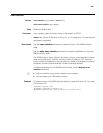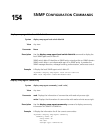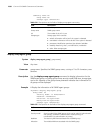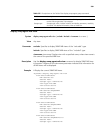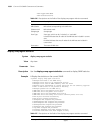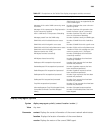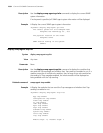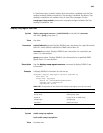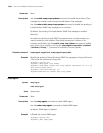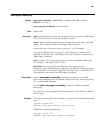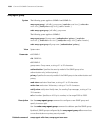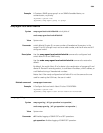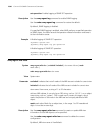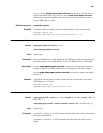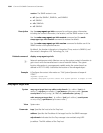
2335
In the above output, enable indicates that the module is enabled with the Trap
sending whereas disable indicates the Trap sending is disabled. By default, Trap
sending is enabled on all modules that can send Trap messages. Use the
snmp-agent trap enable command to manually configure whether the Trap
sending is enabled or not.
display snmp-agent usm-user
Syntax display snmp-agent usm-user [ switch fabricid switch fabricid | username
user-name | group group-name ] *
View Any view
Parameter switch fabricid engineid: Displays SNMPv3 user information for a specified switch
fabric ID. switch fabricid indicates the SNMP switch fabric ID.
username user-name: Displays SNMPv3 user information for a specified user
name. It is case sensitive.
group group-name: Displays SNMPv3 user information for a specified SNMP
group name. It is case sensitive.
Description Use the
display snmp-agent usm-user command to display SNMPv3 user
information.
Example # Display SNMPv3 information for the user aa.
<Sysname> display snmp-agent usm-user username aa
User name: aa
Group name: mygroupv3
Engine ID: 800007DB0000000000006877
Storage-type: nonVolatile
UserStatus: active
enable snmp trap updown
Syntax enable snmp trap updown
undo enable snmp trap updown
View Interface view
Table 618 Descriptions on the fields of the display snmp-agent usm-user command
Field Description
User name SNMP user name
Group name SNMP group name
Engine ID Engine ID for an SNMP entity
Storage-type Storage type
UserStatus SNMP user status



